
To the Prague lecture of Günther Vogt and Ákos Moravanszky
The final lecture of the spring part of the cycle Swiss-Czech Inspiration traditionally took place at the Světozor cinema on Thursday, June 5, with a pair of guest speakers from the ETH Zurich Faculty of Architecture once again sharing the stage in front of an almost full auditorium.
In the first half of the lecture, historian and theorist Ákos Moravánszky introduced the topic of atmosphere in architecture. This theme began to emerge in Swiss architectural discourse in the 1980s as a reaction to the then-prevailing understanding of architecture as a language. In contrast to postmodern debates about signs and meanings, Swiss architects and theorists started to increasingly ask what lies beyond the signs, that is, about the immediate experience and perception that is not just a reflection in the mirror of interpretations. Among architects whose work is based on feelings, moods, and atmosphere are Bruno Raichlin, Miroslav Šik, and Christian Kerez. Although they are students of Aldo Rossi, they soon began to transcend the semiotic boundaries in architecture after completing their studies. Of course, Peter Zumthor, whose several works, including the multisensory perceivable Klangkörper from the Hanover Expo 2000 and the book Atmospheres, formed the core of this part of the lecture. Recently, interest in the theory of atmosphere has shifted from architecture or art to the perception of everyday reality, as seen in the writings of philosophers Hermann Schmitz and Gernot Böhm. In addition to this phenomenological understanding of atmosphere, Moravánszky also addressed the literal meaning, that is, atmosphere in the meteorological sense – architecture as atmosphere. Right at the beginning of his lecture, he presented the well-known Blur Building, a cloud of water vapor by Diller–Scofidio at the Expo 2002 in Yverdon-les-Bains, Switzerland, and, conversely, at the end, he dedicated several remarks to the work of young Swiss architect Philipp Rahm, in whose realizations heat and light are the fundamental “building blocks” and who creates spaces that simulate meteorological phenomena.
Günther Vogt, a highly sought-after landscape architect, introduced himself at the beginning of his lecture as a creator who thinks about landscape architecture in a broader context. Together with his students at ETH Zurich, he addresses questions such as what to do with the landscape in the Alps, where there is now massive migration of residents to large cities, while this abandoned landscape remains owned by individual private owners. This fact complicates its subsequent use. Similar fragmentation of the landscape, which hampers considerations of what to do with the landscape in broader relationships – including its transformation into a full-fledged park, which it practically is in an urban environment – also exists in the suburbs of Zurich. A specific feature of Switzerland is the strong power of local governments, which, however, leads to the situation where residents of individual villages pursue their construction intentions almost regardless of neighboring villages. Conversely, at the very end of his lecture, Vogt presented several examples of how today's person can make an intervention in the landscape regardless of context or local history, as seen in the case of the planned megalomaniacal canals near Istanbul, which shock Vogt with their unimaginable scale. Using his project Novartis Campus Park in Basel as an example, he showed how he works with his students. He still emphasizes hand drawing, even though he is clearly aware of the generational divide between professors who grew up in an analog world and students – children of the digital age. However, physical models are crucial, which are usually processed up to a scale of 1:1 – and when the correctness of what they were trying to verify with such a model is subsequently confirmed, the model becomes the end realization. Physical models are irreplaceable not only for helping students realize, for example, the difference in perceiving the density of forests with different types of trees, but also for searching for suitable “construction” techniques in landscape architecture. It is characteristic of today’s times that most new parks are actually being established on the roofs of underground garages. It was somewhat surprising to hear how naturally Vogt accepts this fact. In the case of his Rectory Farm project in London, this takes on almost absurd dimensions. The largest modern park in London, which Vogt and his collaborators have partly conceived as natural and partly as urban, will be built on a massive reinforced concrete slab, beneath which gravel will be extracted from the substrate for 15–20 years. This will create vast underground spaces for which some meaningful use will be sought only afterwards. Günter Vogt has recently been very successful as a landscape architect. He has collaborated with other leading world architectural offices, such as Herzog & De Meuron or Peter Zumthor. He almost never dedicates himself to small projects; however, he sometimes does not shy away from collaborating on artistic installations, such as the rooftop garden at the Metropolitan Museum in New York. Together with artist Dan Graham, they created a place that combines the atmosphere of a garden with a breathtaking view of the New York skyline.
The lecture by Ákos Moravánszky and Günther Vogt was very interesting, especially in the sense that whether the phenomenon of atmosphere or landscape architecture as such increasingly becomes part of a broader discourse even under our conditions. One can only hope that it will contribute to further deepening both topics in our scene.
In the first half of the lecture, historian and theorist Ákos Moravánszky introduced the topic of atmosphere in architecture. This theme began to emerge in Swiss architectural discourse in the 1980s as a reaction to the then-prevailing understanding of architecture as a language. In contrast to postmodern debates about signs and meanings, Swiss architects and theorists started to increasingly ask what lies beyond the signs, that is, about the immediate experience and perception that is not just a reflection in the mirror of interpretations. Among architects whose work is based on feelings, moods, and atmosphere are Bruno Raichlin, Miroslav Šik, and Christian Kerez. Although they are students of Aldo Rossi, they soon began to transcend the semiotic boundaries in architecture after completing their studies. Of course, Peter Zumthor, whose several works, including the multisensory perceivable Klangkörper from the Hanover Expo 2000 and the book Atmospheres, formed the core of this part of the lecture. Recently, interest in the theory of atmosphere has shifted from architecture or art to the perception of everyday reality, as seen in the writings of philosophers Hermann Schmitz and Gernot Böhm. In addition to this phenomenological understanding of atmosphere, Moravánszky also addressed the literal meaning, that is, atmosphere in the meteorological sense – architecture as atmosphere. Right at the beginning of his lecture, he presented the well-known Blur Building, a cloud of water vapor by Diller–Scofidio at the Expo 2002 in Yverdon-les-Bains, Switzerland, and, conversely, at the end, he dedicated several remarks to the work of young Swiss architect Philipp Rahm, in whose realizations heat and light are the fundamental “building blocks” and who creates spaces that simulate meteorological phenomena.
Günther Vogt, a highly sought-after landscape architect, introduced himself at the beginning of his lecture as a creator who thinks about landscape architecture in a broader context. Together with his students at ETH Zurich, he addresses questions such as what to do with the landscape in the Alps, where there is now massive migration of residents to large cities, while this abandoned landscape remains owned by individual private owners. This fact complicates its subsequent use. Similar fragmentation of the landscape, which hampers considerations of what to do with the landscape in broader relationships – including its transformation into a full-fledged park, which it practically is in an urban environment – also exists in the suburbs of Zurich. A specific feature of Switzerland is the strong power of local governments, which, however, leads to the situation where residents of individual villages pursue their construction intentions almost regardless of neighboring villages. Conversely, at the very end of his lecture, Vogt presented several examples of how today's person can make an intervention in the landscape regardless of context or local history, as seen in the case of the planned megalomaniacal canals near Istanbul, which shock Vogt with their unimaginable scale. Using his project Novartis Campus Park in Basel as an example, he showed how he works with his students. He still emphasizes hand drawing, even though he is clearly aware of the generational divide between professors who grew up in an analog world and students – children of the digital age. However, physical models are crucial, which are usually processed up to a scale of 1:1 – and when the correctness of what they were trying to verify with such a model is subsequently confirmed, the model becomes the end realization. Physical models are irreplaceable not only for helping students realize, for example, the difference in perceiving the density of forests with different types of trees, but also for searching for suitable “construction” techniques in landscape architecture. It is characteristic of today’s times that most new parks are actually being established on the roofs of underground garages. It was somewhat surprising to hear how naturally Vogt accepts this fact. In the case of his Rectory Farm project in London, this takes on almost absurd dimensions. The largest modern park in London, which Vogt and his collaborators have partly conceived as natural and partly as urban, will be built on a massive reinforced concrete slab, beneath which gravel will be extracted from the substrate for 15–20 years. This will create vast underground spaces for which some meaningful use will be sought only afterwards. Günter Vogt has recently been very successful as a landscape architect. He has collaborated with other leading world architectural offices, such as Herzog & De Meuron or Peter Zumthor. He almost never dedicates himself to small projects; however, he sometimes does not shy away from collaborating on artistic installations, such as the rooftop garden at the Metropolitan Museum in New York. Together with artist Dan Graham, they created a place that combines the atmosphere of a garden with a breathtaking view of the New York skyline.
The lecture by Ákos Moravánszky and Günther Vogt was very interesting, especially in the sense that whether the phenomenon of atmosphere or landscape architecture as such increasingly becomes part of a broader discourse even under our conditions. One can only hope that it will contribute to further deepening both topics in our scene.
The English translation is powered by AI tool. Switch to Czech to view the original text source.

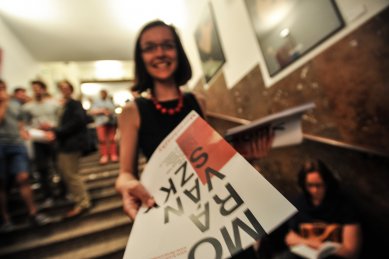
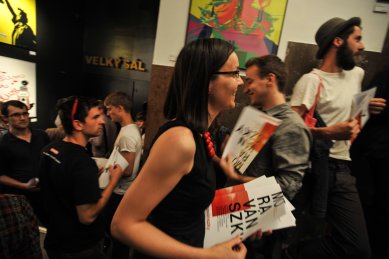
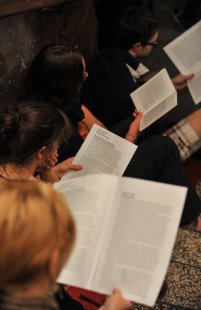
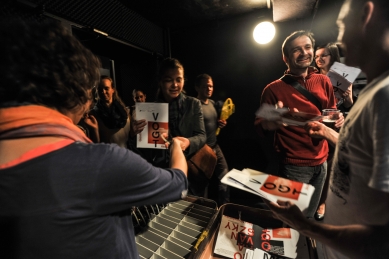
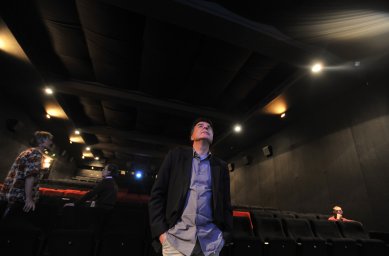
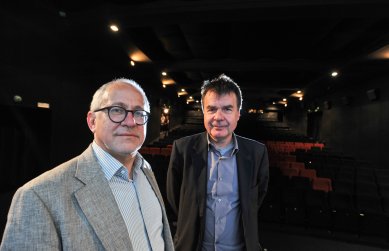
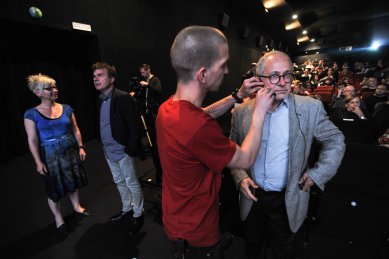
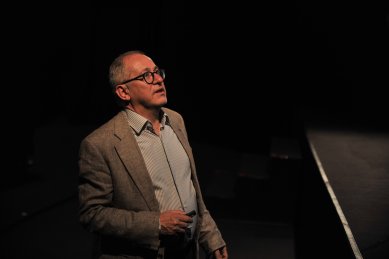
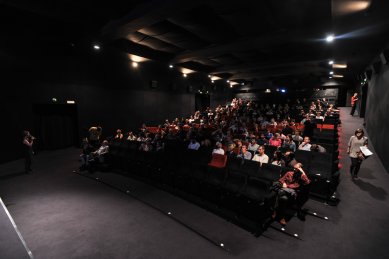
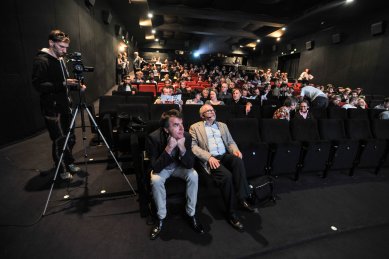
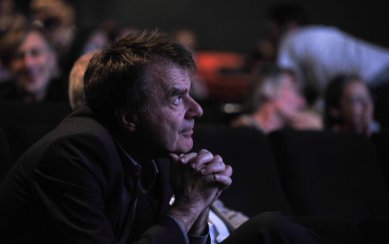
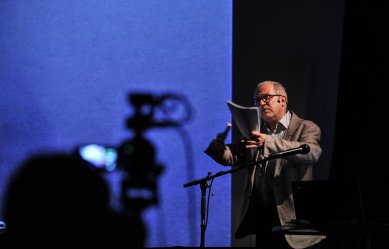
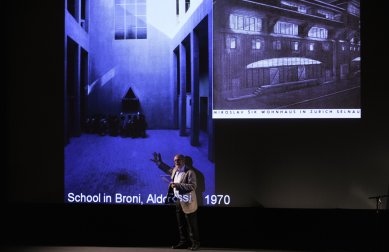
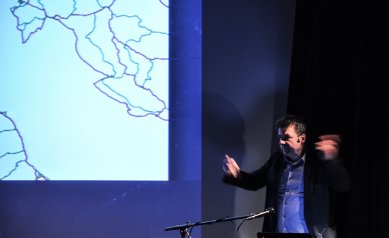
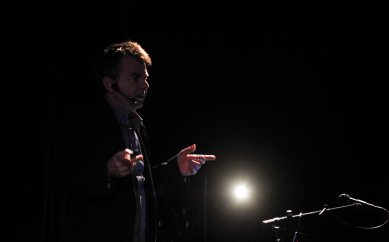
0 comments
add comment
Related articles
0
04.11.2021 | <kruh>autumn 2021: Ákos Moravánszky</kruh>
0
30.09.2019 | For Justice... Ákos Moravánszky
0
01.05.2015 | Procedural Cartography of Štvanice Island - Workshop Results
0
16.06.2014 | Insights from the working group with Günther Vogt and Ákos Moravánszky
0
05.06.2014 | bread spring 2014: Günther Vogt + Ákos Moravanszky
0
17.02.2014 | kruh spring 2014: Swiss-Czech inspiration











